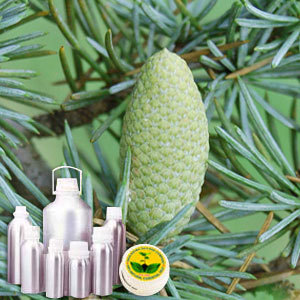Botonical Name | : | Cedrus deodara | |
CAS # | : | 68991-36-6 | |
Country of Origin | : | India | |
Color & Odor | : | Colorless clear liquid with a dry - woody aroma, slightly camphoraceous odor | |
Solubility | : | Insoluble in alcohol and oils, soluble in water. | |
Specific Gravity | : | 0.930 - 0.938 @ 20° | |
Optical Rotation | : | +48° to +75° | |
Refractive Index | : | 1.508 - 1.580 @ 20° | |
Flash Point | : | >100°C | |
Ph value | : | 1% (min) | |
Essential Oil Content | : | Himachalene | |
Plant Part Used | : | Wood | |
Extraction Method | : | Hydro Distillation |
DESCRIPTION:
Cedarwood Himalayan extract is taken from the wood part of the tall, evergreen tree found in the Indian Himalayan Plateau. Having color from pale yellow to green, it has a dry-woody aroma and is slightly camphoraceous, smoky & balsamic. Steam distilled, Cedarwood Himalayan extract also has a very subtle aroma with a hint of spice.CONSTITUENTS:
beta-Himachalene, gamma-Himachalene, alpha-Himachalene, Sesquiterpene hydrocarbons, Sesquiterpenes.AROMATIC SUMMARY / NOTE / STRENGTH OF AROMA:
A sweet floral aroma similar to the scent of woody and herbal citrus freshly.BLENDS WITH:
It works well with Chamomile, Rosemary and Eucalyptus.COMMON NAMES:
Deodara.USES:
It is well recognized for its aromatic qualities and used as antiseptic, antiseborrheic, anti putrescent, aphrodesiac, diuretic, astringent, expectorant, mucilytic, fungicidal, sedative (nervous), tonic and stimulant (circulatory). It also has insecticidal & antifungal properties and helps in controlling fungal deterioration of spices during storage.


































